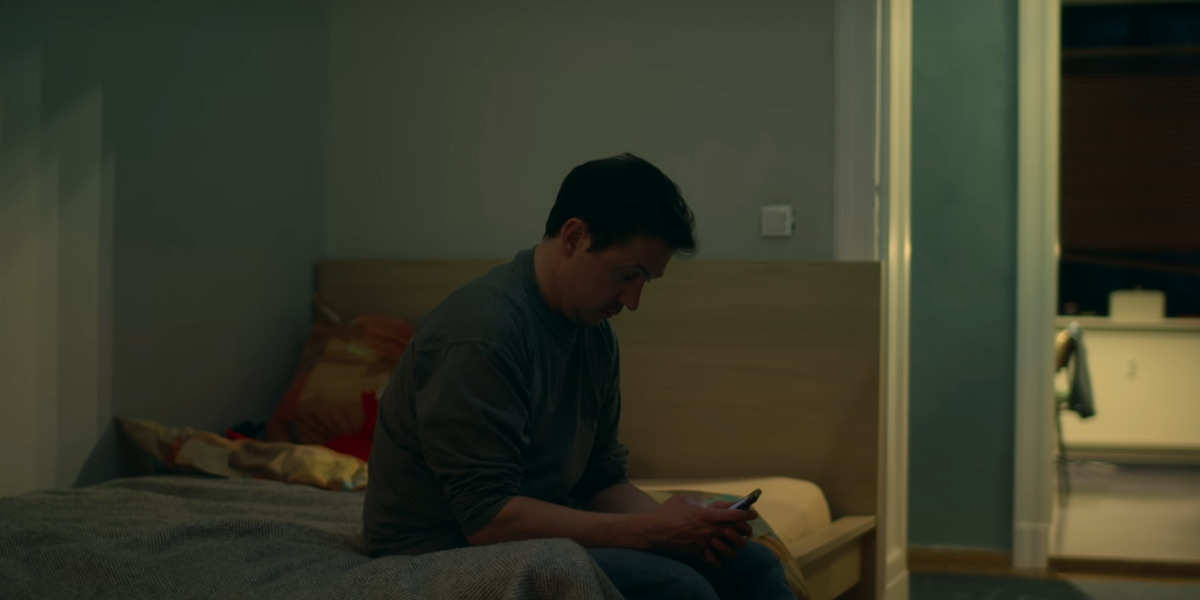In Netflix’s German crime documentary series, ‘Crime Scene Berlin: Nightlife Killer,’ experts, law enforcement personnel, and other involved individuals delve into a string of murders that plagued the streets of Berlin in 2012. Targeting the city’s queer community, a serial killer preys on gay men, equipping mysterious means as their weapon of choice. Nevertheless, as the killer’s limited pattern and motive remain difficult to decipher, pressure increases for Homicide Detectives to solve the case and find the culprit behind the murders. The documentary focuses on the killer’s three victims, Nicky Miller, Alexander, and Peter, as the police harvest whatever clues and leads they can from the three different crime scenes to solve these murders.
Darkroom Killer’s Victim: Peter Died Via GHB Overdose
Peter, a 41-year-old man living in Weserstraße, Berlin, died on May 15, 2012, in his own apartment. According to news reports, an emergency call led the firefighters to find his dead body face down on the bed. The first responders immediately reached out to the police. From early on, the similarity between Peter’s crime scene and a previous murder victim, Alexander, remained evident. The latter’s death was already suspected to be connected to Nicky Miller’s murder, who died eleven days before Peter’s murder in the darkroom of an LGBTQ+ bar, Grosse Freiheit 114. Miller’s initial crime scene and the extensive investigation that followed coined the nickname “The Darkroom Killer” for the murderer.

As the police investigation began on Peter, the authorities realized that the same killer responsible for Miller and Alexander’s deaths lured Peter into a trap by becoming acquaintances with him online. The documentary, which utilizes court records, professional opinions, and witness accounts as its base research, asserts that Peter went by the pseudonym “Mario” in his online chats with a strange man. Eventually, after some small talk, the two decided to meet up in real life, which brought Peter face-to-face with the man who would end up being his killer.
Thus, the night ended with the killer drugging Peter with his signature “knockout drops,” GHB. Surely enough, after the discovery of Peter’s body, an autopsy report showcased that he died of an overdose of GHB. Known as a designer drug for its lab-grown nature, Gamma Hydroxybutyrate (GHB) — or liquid ecstasy — is a depressant that leads to blackout effects when combined with alcohol. The combination can often lead to fatal effects. The same made the drug a convenient tool for the killer as his modus operandi.
The police, under homicide detectives such as Andres Voges and Monika Laschke, and their colleagues continued investigating the murders — treating the crime as a serial killer operation. Peter’s death was added to the elusive killer’s list of crimes. Eventually, a lead showed up through records of Alexander’s phone, which revealed a name, Dirk, who was the last person to contact the victim. Consequently, the police brought Dirk in for questioning, and the man remained calm and collected for much of the process.
Dirk confessed to being the man in a security camera footage, confirming his identity as the man who attempted to murder Miroslaw Wawak, who would’ve been his third victim if the latter hadn’t managed to escape. Thus came Dirk’s confession to the killing of Alexander, Nicky — and, ultimately, Peter. The following trial landed Dirk a verdict of a life sentence in 2013. Nine months after the verdict, in late March 2014, the man died by suicide.
As such, Peter’s murderer, Dirk P., a 38-year-old nurse — known by his serial killer nicknames “The Darkroom Killer,” “Gift-Killer,” or “Nightlife Killer,” died, leaving an unsolved mystery behind about his motives. To this day, no one knows why Peter fell victim to the killer’s crimes, with the general assumption remaining that the former happened to be the unfortunate passer-by who crossed paths with Dirk P.
Furthermore, unlike other victims’ friends or family, no one from Peter’s social circle became a part of the Netflix documentary, leaving any added information about what ensued after the man’s death out of the public eye. In fact, most details about the victims, even his last name, haven’t been brazenly disclosed to the public, likely in respect of Peter and his loved ones’ privacy.
Read More: Best Serial Killer Movies on Netflix


You must be logged in to post a comment.